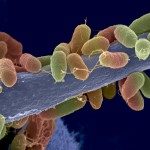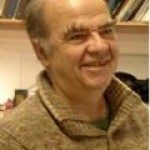Link to Pubmed [PMID] – 23198968
Langmuir 2012 Dec;28(49):16738-44
Currently, there is a growing need for methods that can quantify and map the molecular interactions of biological samples, both with high-force sensitivity and high spatial resolution. Force-volume imaging is a valuable atomic force microscopy (AFM) modality for probing specific sites on biosurfaces. However, the low speed and poor spatial resolution of this method have severely hampered its widespread use in life science research. We use a novel AFM mode (i.e., peak force tapping with chemically functionalized tips) to probe the localization and interactions of chemical and biological sites on living cells at high speed and high resolution (8 min for 1 μm × 1 μm images at 512 pixels × 512 pixels). First, we demonstrate the ability of the method to quantify and image hydrophobic forces on organic surfaces and on microbial pathogens. Next, we detect single sensor proteins on yeast cells, and we unravel their mechanical properties in relation to cellular function. Owing to its key capabilities (quantitative mapping, resolution of a few nanometers, and true correlation with topography), this novel biochemically sensitive imaging technique is a powerful complement to other advanced AFM modes for quantitative, high-resolution bioimaging.

